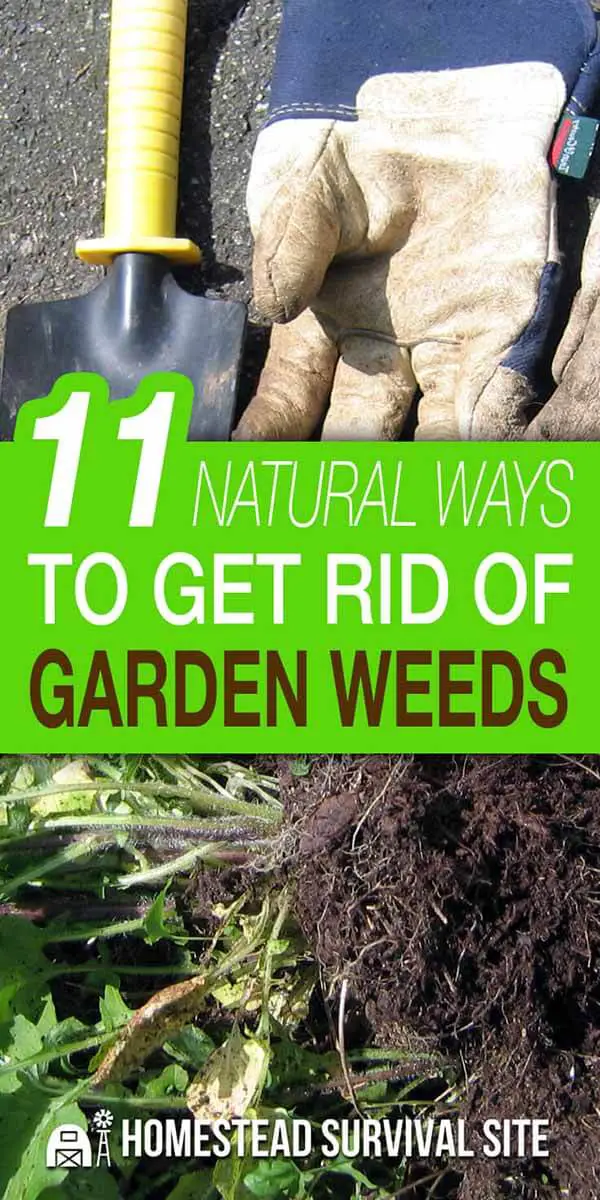Estimated reading time: 5 minutes

Weeds are a constant thorn in the side of gardeners everywhere, sometimes literally as well as figuratively. Unfortunately, the most common ways for gardeners to deal with these weeds are not the most healthy or beneficial.
Weed killers that are powerful enough to kill weeds on contact are also toxic enough to harm the people using them. This is especially concerning if you plan on eating the food growing next to the weeds you're spraying.
Rather than relying on weed killers that have been proven to cause a wide range of health problems from reproductive issues to organ damage, check out these 11 natural ways to get rid of garden weeds.
1. Corn Meal
Spreading cornmeal over the soil of your garden prevents new seeds from germinating. After your vegetables have already germinated, you can dig up any weeds that have already taken root then cover your soil with cornmeal to prevent any new weed seeds from growing into a plant.
2. Vodka
Believe it or not, too much vodka is just as detrimental to weeds as it is to human beings. Mix one ounce of vodka with two cups of water and a few drops of dish soap, then thoroughly spray the weeds with this mixture. The vodka works to dry out weeds when they are exposed to sunlight, meaning that this solution might not work as well for weeds in the shade. You’ll also want to be careful not to get the mixture on the plants you want to keep alive, as it will dry them out as well.
3. Boiling Water
Weeds may need water to survive, but when that water is above 212 degrees Fahrenheit, it isn’t quite as beneficial. Spraying weeds with boiling water will shock their system and kill them in no time. However, since the water will quickly cool down once you remove it from its heat source, this may not be the most convenient solution.
Want to start a homestead but not sure how?
Click Here to get a FREE book, "How To Homestead No Matter Where You Live."
4. Newspaper
Laying down sheets of newspaper over the soil in your garden prevents sunlight from reaching weeds, killing the ones that have already sprouted and preventing new weeds from taking root. You’ll want to make your newspaper barrier about ten sheets thick, then wet it with water to compress it down. Afterward, add a layer of mulch on top of the newspaper.
Covering your soil with newspaper won’t harm your desirable plants in any way so long as they are big enough that they aren't covered up by the paper. Over time, the newspaper will break down into a great fertilizer.
5. Plastic Sheeting
Like newspaper, dark plastic sheeting can be used to keep weeds from getting the sunlight they need to survive. Unlike newspaper, plastic sheeting is able to block your desirable plants from getting water to their roots, so it’s best to only use plastic sheeting between your rows instead of covering the base of your plants with it.
6. Vinegar
The acid contained in vinegar is highly destructive to plant leaves, especially for young plants that have just taken root. You’ll just want to be careful not to get vinegar on your desirable plants, as it will certainly kill them as well if given the opportunity.
7. Soap
Most varieties of weeds either have a layer of tiny hairs or a layer of wax that covers their leaves and helps prevent the leaves from drying out in the sun. Soap, however, is able to break down these hair and wax layers, leaving weed susceptible to drying out. Add a few squirts of soap to water or to another weed-killing solution such as vinegar or vodka and spray away.
8. Fire
Exposing weeds to high heat is a great way to kill them almost immediately. When using a torch to kill weeds, the goal isn’t to set them on fire but rather to heat them up to the point that they are no longer able to survive.
Since you won’t want to get the torch anywhere near your desirable plants, though, this method is only effective for killing weeds in the middle of your rows, and even still you will want to make sure that you are keeping the flame well away from your plants. Also, only use this method for weeds that are still green. Putting a flame to dry weeds will likely leave you with a grass fire that could consume your entire garden. In other words, proceed with caution.
Want to start a homestead but not sure how?
Click Here to get a FREE book, "How To Homestead No Matter Where You Live."
9. Plant Spacing
The manner in which you space your plants can play a big role in preventing weeds from taking hold. If you plant your plants as close together as possible, once they reach maturity their leaves will block sunlight from reaching the ground beneath them, preventing weeds from growing up in your rows. Keep in mind, though, that some plants don't do well when planted too closely together. Plant your plants as close as you can, but always follow the planting instructions on your seed packet first.
10. Mulch
Mulch is a gardener’s best friend, as it’s great for plants and bad for weeds at the same time. After your plants have sprouted and grown large enough that they won’t be covered up by the mulch, apply a generous layer of mulch to the soil of your garden. This mulch will both nourish your plants and keep weeds from sprouting.
11. Good Old-Fashioned Weed-Pulling
If all else fails, a pair of gloves and a garden spade can do wonders. Weeds are easy to uproot by hand when they are young, and for bigger weeds, you can use a spade to dig up the weed’s root system. At first, pulling weeds by hand may be quite the chore, but once you have most of the weeds removed, staying on top of them shouldn’t be too difficult so long as you make weed-pulling a part of your daily gardening routine.


None of this works on Nut Grass. I’ve been fighting it in my raised beds since I bought this house 12 years ago. It even survived my layering 8 sheets of newspaper, 2 layers of cardboard, black garbage bags, and concrete blocks!!! More nut grass came up after I removed all that 2 1/2 weeks later, and some had grown through the newspaper.
Any ideas? I want to plant veggies in my raised beds so I can’t salt the ground and ruin it.
Thanks.